Light Lens Lab 1966 50mm f/1.2 and SPII 50mm f/2 Review: Rare Lenses Recreated
![]()
This article will review two prototype lenses from Light Lens Lab: the “1966” 50mm f/1.2 lens and the SPII 50mm f/2 multi-coated rigid design lens. Light Lens Lab based in China has an interesting business model. Instead of designing new highly corrected camera lenses, they re-create special lenses from past decades.
After attending a Leica workshop last year with Mark DePaolo, entitled, “Photography Wide Open”, you can appreciate that not everything you see is in sharp focus. As an optometrist, I have dedicated my career to helping people see clearly. In reality, your sharpest vision is limited to a very small portion of your retina – called the fovea. When you read, you are using these densely packed retinal cone cells for your sharpest vision. The peripheral retina beyond this area uses more rod cells and is better suited to detect large objects and motion. My takeaway from this workshop is that a lot of the emotion you experience in photographs is the blur. It sounds counter-intuitive but blur
in some photographs makes you look at them longer and is more engaging. Shooting a 50 f/1.2 lens wide open delivers unique images with a thin zone of focus surrounded by blur in front and behind the plane of focus.
Depth of Field
Photographing dominos on a table provides an excellent way to demonstrate how aperture size affects depth of field. Here is the overhead view of five dominos.

Using the lens aperture wide open at f/1.2 shows just the middle domino is in focus with significant blur in front and behind. The image has lower contrast and muted colors.
![]()
Using the aperture stopped down to f/16 shows all the dominos in focus and you can even see the chairs behind the table. The image also has higher contrast and more saturated colors.
![]()
Light Lens Lab “1966” 50mm f/1.2 Review
A Little History
In 1966, Leitz introduced a legendary Noctilux 50mm lens with two aspheric surfaces. Its widest aperture of f/1.2 enabled photographs to be made in available light using high-speed films of the day – such as Kodak Tri-X (ISO 400). The two aspheric surfaces reduced optical aberrations producing clear central images with medium to high contrast. Optical design trade-offs resulted in vignetting and moderate barrel distortion. The minimal focusing distance was 100 cm (3.2 feet). When the aperture was stopped down to f/5.6, the lens performed quite well compared to other 50mm lenses from its era. There were significant difficulties hand grinding the two aspheric surfaces resulting in a limited production run estimated to be less than 2000 lenses from 1966-1975. Due to its unique optical qualities and rarity, this lens has reached used prices of $40,000.
In 2021, Leica re-introduced this lens using modern manufacturing techniques with optical performance similar to the original design. I was able to shoot with this lens during a workshop and it is quite compact compared to Leica’s Noctilux 50mm f/1 and 50mm f/0.95 lenses. The new Noctilux-M 50mm f/1.2 ASPH has a list price of $7,895 and is available in black aluminum from many Leica retailers. The chrome version is made from brass and is considerably heavier and rarer with only 100 lenses produced that have reached aftermarket prices of $59,000 or greater.
According to David Chen of Light Lens Lab, North America, their engineers analyzed the original 1966 Leitz Noctilux design and glass element chemical composition to recreate the lens with manual grinding and polishing methods. Modular Transfer Function graphs (MTF) describe how a lens images resolution and contrast. The following MTF graphs indicate that LLL’s prototype 1966 lens provides similar performance compared to the original Leitz design lens. The MTF charts were provided by David Chen of LLL, North America.
![]()
![]()
The prototype #01 lens for this review was loaned by Tony Rose at Popflash Photo in Thousand, Oaks CA. He is the U.S. distributor for their lenses. This lens is quite compact and well-balanced on a Leica M10 body and is only slightly larger than the Leica 50mm f/1.4 pre-aspheric lens. It was sent with a detachable lens shade that contained an internal Series 7.5 filter.
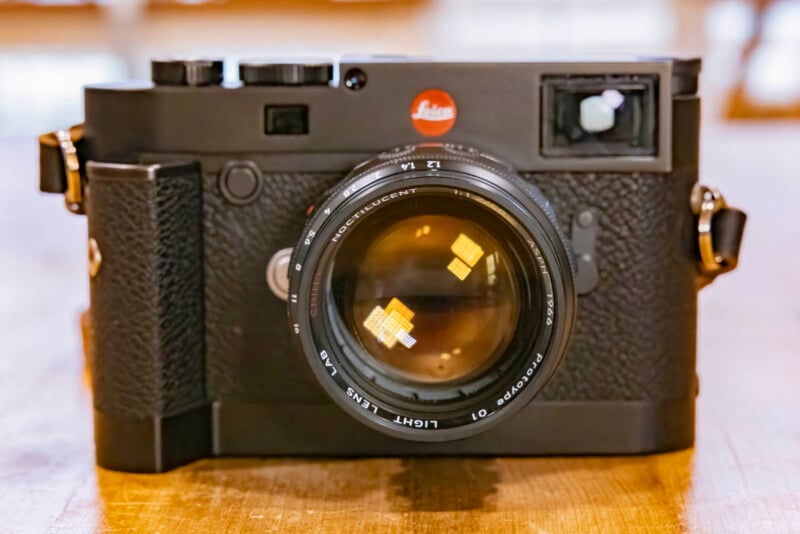
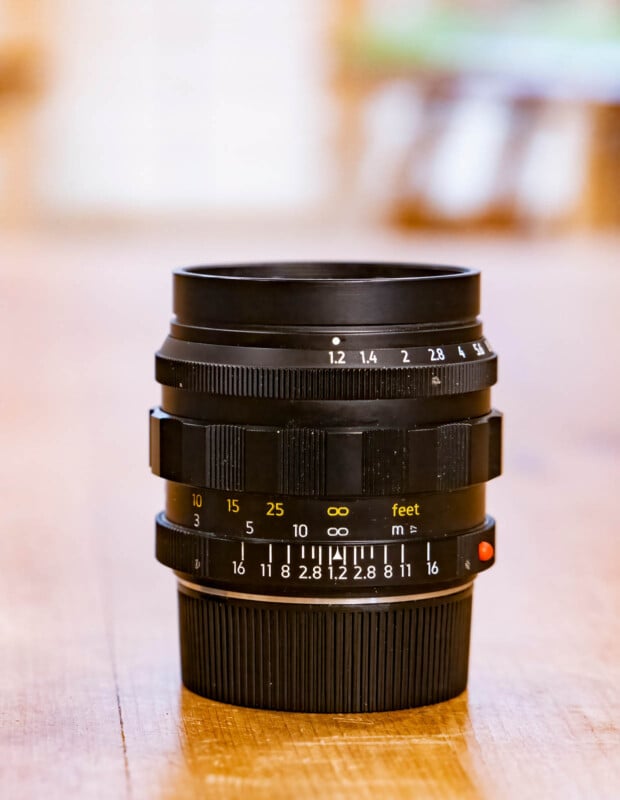
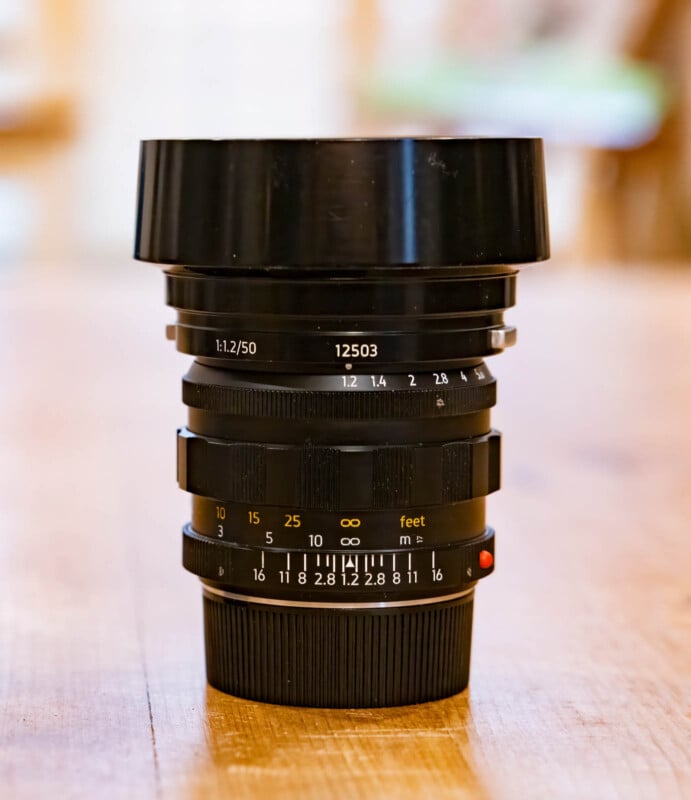
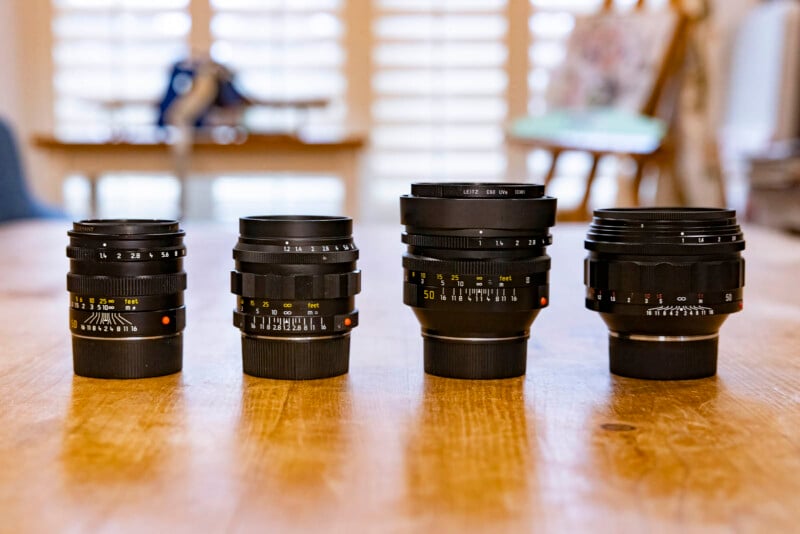
Lens Performance
I photographed the same scene with 3 lenses at their widest aperture taken with a Leica M10. The focus point was the top edge of the metal bowl.
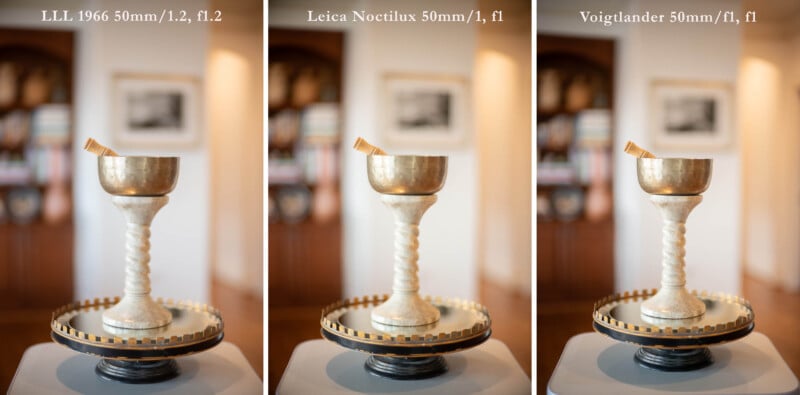
At the point of focus, the prototype 1966 LLL lens centrally was actually sharper than Leica’s Noctilux 50mm f/1. Leica’s Noctilux 50mm f/1 does not contain aspheric elements and was produced from 1975 to 2008. The Voigtlander 50mm f/1 introduced in 2022 was the sharpest of the group having both aspheric elements and a floating lens design. The bokeh was pleasing with all three lenses.
Here is a comparison of different apertures with the prototype LLL 1966 lens. By f/8, you can recognize Elliott Erwitts’ photograph, “California Kiss.”
![]()
Sample Photographs
Photographing with the 1966 lens at f/1.2 was a lot of fun. Its small size on an M10 makes it easy to carry on a daily basis. Controlling the focus point at f/1.2 can make average subjects ethereal and interesting. You had to work a bit to create flare with this lens. Even a self-portrait at Black Dog Salvage in Roanoke, VA can make me look good.
![]()
![]()
![]()
![]()
![]()
Should You Buy It?
The prototype 1966 LLL lens delivered impressive images and colors in a compact size and handled well with a Leica M10 body and Canon R5 with an adapter. Priced at $1,999, it’s a bargain compared to the original Leitz collectible lens or the new Leica remake. An even greater bargain is the silver version made with brass which is heavier and priced at $2,299. There is a waiting list for this special lens. If manufacturing tolerances are maintained, LLL will sell as many lenses as it can manufacture.
Light Lens Lab SPII 50mm f/2 Rigid Review
This is a follow-up review of LLL’s Speed Panchro II lens review published in March 2023 at PetaPixel. A new silver version of this lens named “SPII” will be available in a more compact size with a rigid barrel design and multi-coating.
Prior to 1956, Leitz 50mm lenses were collapsible permitting a more compact size when not in use. In 1957, Leitz introduced the rigid design barrel eliminating the moving tube for greater long-term stability. The lenses also had an infinity focusing lock that could be disengaged by pressing down on it to focus the lens closer than infinity. It takes a little practice to rest your finger on the spring-loaded release lock when focusing close to infinity so the lens doesn’t lock inadvertently. The prototype lens had 1/3 aperture stops. The production version will have standard 1/2 stops from f/2 to f/22. It accepts 39mm filters. The prototype lens was supplied with a silver metal hood that attaches with a tiny tightening screw.
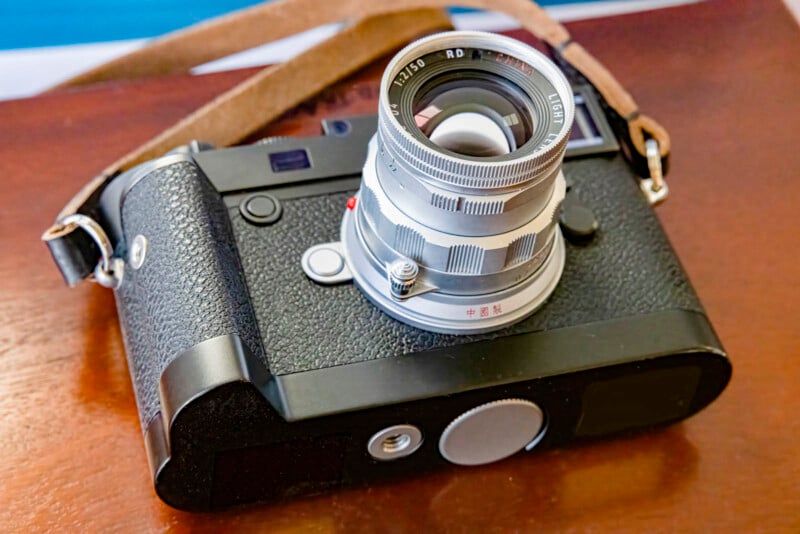
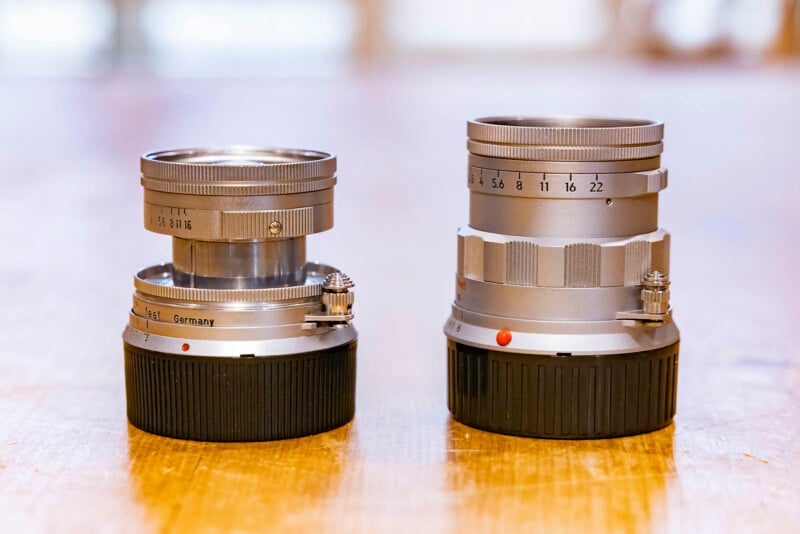
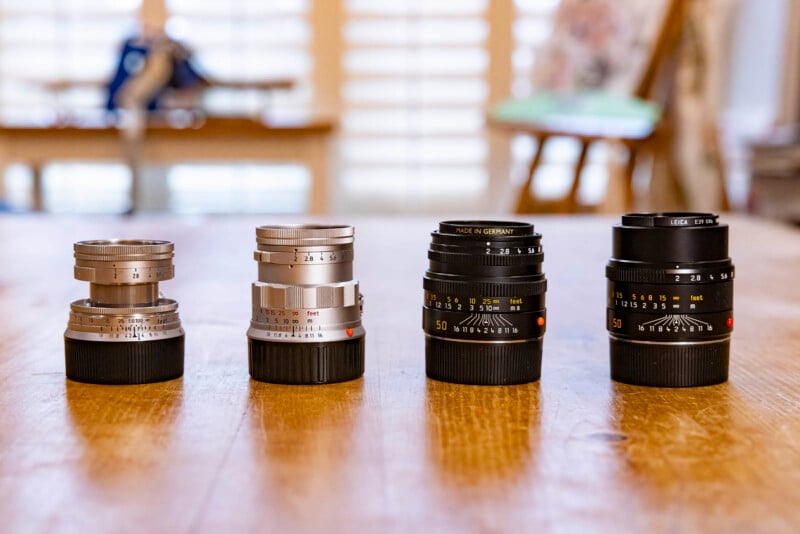
Lens Performance
Here is a comparison of different apertures with the prototype SPII lens. It performs similarly to the prior prototype lens tested last year. The central area of the lens is sharp. The out-of-focus areas are very pleasant creating a 3D effect. By f/8, Erwitt’s print is recognizable.
![]()
Sample Photographs
![]()
![]()
![]()
Should You Buy It?
I recommended the original version of this lens based on the design, performance, and price. I like the rigid barrel version even more. It’s a classic lens design, more compact than the previous version, and has multicoated lens elements. The additional anti-reflection layers will help reduce unwanted lens flare. There’s something special about silver lenses with a Leica M camera – even with a black body.
References
![]()
For those readers who want to learn more about the history of Leica lenses, Erwin Puts wrote multiple books about Leica optics providing extensive analyses of their products. The new Leica BIG Pocket Book from Red Dot Photo in the UK is another trusted source of information about Leica lenses and camera systems. Ghester Sartorius’ book, Identifying Leica Lenses, also provides information about Leica lenses and some accessories.
About the author: Richard Clompus is a retired optometrist with an interest in optics and photography that spans four decades. Photography experience spans large format film cameras to extensive use of Leica and Canon gear. He has studied photography with Michael A Smith, Mark Cohen, Ralph Gibson, and Mark DePaola. His career includes two decades of providing patient care, a decade with Johnson & Johnson Vision, and the development of electronic eyewear with multiple patents in this field. All photographs in this article were taken by the author. There are no financial or consulting connections of any kind with Light Lens Lab or PopFlash Photo. The prototype lenses were returned after the evaluation was completed.